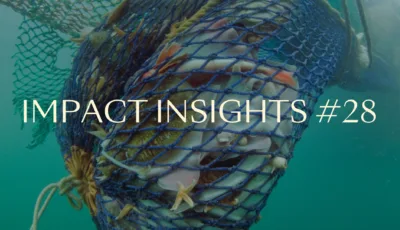Why impact investors should care about the EU Taxonomy’s “minimum safeguards”

The deadline for giving feedback on the draft report on criteria for the “minimum safeguards” in the EU Taxonomy was last week. The “minimum safeguards” ensure that human rights are an integral part of an “environmentally sustainable” activity under the EU Taxonomy. With the draft, the bits and pieces of the EU Taxonomy are slowly coming together. At Norselab, we welcome the draft report. It provides more clarity on a difficult area of the Taxonomy where there are myriad of different ways to check for compliance. And, it bolsters our belief that there are great benefits in embedding the “minimum safeguards” in growth companies.
The Taxonomy explained
The EU Taxonomy is a classification system for what the EU considers to be “environmentally sustainable” economic activities. The Taxonomy lays out six environmental objectives, including climate change mitigation, climate change adaptation, circular economy, use of water and marine resources, pollution prevention, and healthy ecosystems.
Under the Taxonomy, an economic activity has to substantially contribute to at least one of the environmental objectives. There are technical screening criteria that define a “substantial contribution”. In addition, the activity cannot harm any of the other environmental objectives.
Finally, the company performing the economic activity has to meet the Taxonomy’s “minimum safeguards”. In short, the “minimum safeguards” require companies to align with the voluntary standards OECD Guidelines for Multinational Enterprises and UN Guiding Principles for Business & Human Rights. The standards establish that a company has to avoid harming people and people’s rights. They are widely recognized by governments, investors, companies, and civil society as the most prominent standards for managing social risks.
To avoid harm to people, the standards define concrete steps for companies to implement due diligence processes. The goal of these processes is to identify company risks that negatively impact people throughout the value chain. This could include risks related to employee health and employee safety, or risks related to employee working conditions in the supply chain. Once a risk is identified, a company must take action to avoid or mitigate the risk. Actions could include more frequent safety trainings, paid maternity leave, discrimination, and harassment coaching. If a company ends up harming people it must take action to remedy the situation by for example providing financial compensation, an apology, or rehabilitation.
On the path to improved enforcement
The draft report on criteria for “minimum safeguards” provides further guidance on how we, as investors, can check that a company aligns with the OECD Guidelines for Multinational Enterprises and UN Guiding Principles for Business & Human Rights. It’s needed: there is no one, agreed way for investors, banks, governments, and civil society to check how well companies align with these two voluntary standards. There are a range of different ESG and supplier screening services with human rights modules, various benchmarking and surveys, and different sites for human rights news and updates. To complicate things, some countries have turned the standards into different national laws. All these initiatives overlap, but there are also many differences between them. So, there are plenty of information sources, but there is no common understanding of the “best” or most agreed on way of checking.
The draft sets out two criteria:
- Check for implementation of the due diligence process: the draft recommends using the upcoming Corporate Sustainability Reporting Directive for this. Under this Directive, companies must report on a range of factors that overlap with the requirements in the standards. If a company reports according to (and is audited against) this Directive, an investor can be reassured that this criteria is fulfilled. For companies that don’t fall under the upcoming Directive (for example SMEs or companies outside the EU), the draft recommends using checks in the World Benchmarking Alliance’s Corporate Human Rights Benchmark.
- Check that there are no final convictions related to human rights, or a history of refusal to participate in stakeholder dialogue: the draft recommends checking that a company or its top management has not been finally convicted for human rights due diligence laws, labor laws, consumer protection laws, data protection laws, humanitarian law, and criminal law. The draft also recommends checking with OECD National Contact Points that the company engaged in dialogue if it was invited to. Finally, it recommends checking with the Business & Human Rights Resource Center’s database to see if the company replied to requests from the center.
“Minimum safeguards” at Norselab
At Norselab, we include a Taxonomy screening as part of our impact assessment in the investment process. Our guiding star is the UN Sustainable Development Goals. Regulations such as the Taxonomy is another layer we use to stack data points for the assessment. We consider that the Taxonomy provides an additional framework for assessing companies’ alignment with a climate-neutral economy. Based on the signals in the draft report, we can now look to include more specific checks for the “minimum safeguards” requirement and help our portfolio companies to implement them.
We are convinced that helping companies implement the “minimum safeguards” is strategically smart; it helps companies attract new investors and customers. Investors are increasingly looking for companies that proactively anticipate and manage labor and human rights risks, along with climate and environmental risks. And, under the Sustainable Finance Disclosure Regulation, investors and banks are required to collect information from our portfolio companies on environmental and social matters, including compliance with the “minimum safeguards”.
While the sustainability-related regulations coming out of the EU mostly apply for large companies, our portfolio companies will be indirectly affected as suppliers to larger companies. Customers will increasingly require that the companies they buy from comply with the “minimum safeguards”.
For companies that are growing, like the ones we invest in through our venture funds, finding smart, efficient, and tailored processes that meet the “minimum safeguards” is key. Embedding the “minimum safeguards” from the get-go of a relatively new company raises awareness of the company's risks to people. This is important when the company is looking to enter a new market, build a new product, or partner with new customers and suppliers. It means that a company early on develops a robust risk management framework that lays the foundation for scaling and growth in line with best practices. This is a much easier exercise than trying to retroactively implement processes. As active owners, we’ll be working with our portfolio companies on “minimum safeguards” going forward. With the draft report, we now have indications for what criteria portfolio companies may face in the future. That will help guide our support.
For all companies, it’s important that “minimum safeguards” become meaningful to the company’s processes. It shouldn’t be considered a “tick-the-box” exercise through, for example, self-declaration forms from investors and customers. If we guide new growth companies with knowledge and know-how on human rights, we may see a new generation of companies with “minimum safeguards” truly embedded in the company’s operations from the outset.


